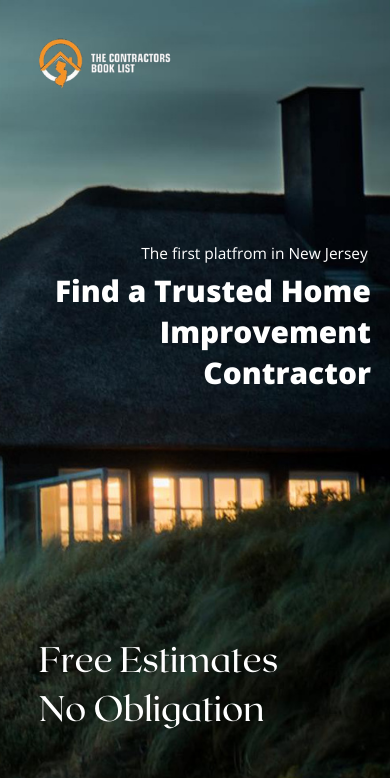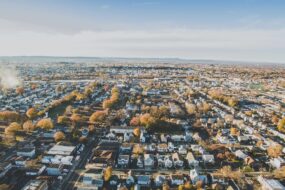
Pavement Stones: Timeless Elegance and Durability – Discover the allure of pavement stones for your outdoor spaces. Uncover the timeless beauty and versatility of stone pavers, known for their durability and long-lasting performance. From pathways to patios, pavement stones offer a wide range of design options and textures to enhance the aesthetic appeal of your landscape. Explore the benefits of choosing pavement stones and create an enduring and stunning outdoor environment. Learn more about the captivating world of pavement stones today.
Planning a new patio can be an exciting and creative process. Whatever sort of look you are dreaming of, from natural to rustic to sophisticated or anything in between, there is a hardscaping material that can achieve it. However, paving stone should be chosen not only for its aesthetic effect but also for its utility. Certain types of stone hold up better in the elements, others are easier to maintain, and it’s important to select the one that works best for your family’s lifestyle.
Given the array of choices, though, you don’t have to sacrifice beauty for utility. Here are some of the best selections of materials that can help you to create a patio that your family and guests will enjoy for decades to come.
Old School Materials for pavement stones
CONCRETE
Concrete makes for a versatile and durable patio material. It is relatively inexpensive, and because it is poured, it can accommodate any size and space requirements you may have. Basic concrete, of course, can have a bland and low-end feel, but newer finishing processes allow it to take on the effect of more expensive materials, such as flagstone or brick.
Concrete can be somewhat tricky to use in climates that get very cold, as it can crack when temperatures dip below freezing. Another consideration is that efflorescence, a whitish residue that is produced when concrete is exposed to low temperatures and moisture, can occur with any concrete-based material and should be promptly power washed or scrubbed from the surface to avoid permanent discoloration. Also keep in mind that if you opt for concrete with special tints and textures, the surface may have to be refinished every few years, depending on the effects of the elements in your area and the amount of use your patio typically gets.
NATURAL STONE
It’s easy to see why some people will not consider anything but natural stone for their patio. The varying shapes and textures of materials such as sandstone, limestone, slate, and granite create a soothing, lush, yet earthy quality for your space and complement any colors that you might choose to accent your patio. It is not, however, an inexpensive option, as quarrying and transporting natural stone is a labor-intensive process. Installation is also expensive due to the effort and expertise it takes to create a relatively smooth surface from individual stones with their irregular thicknesses, sizes, and textures.
Professional installation is an absolute must. It may be wise to avoid using natural stone around pool areas as it has a tendency to become slippery, but it works well as a patio material. Other potential drawbacks include a tendency to crack and a somewhat bumpy surface even with professional installation due to the natural variations that come with using a natural product; sometimes it is difficult to source stone with enough consistency in color and thickness to complete a project. And, if you run out of material in the middle of a project, it is often difficult to match with additional pieces.
Finally, natural stone is particularly prone to etching and deep scratches that are virtually impossible to repair.
BRICK
Brick is a tremendously versatile material that can look rustic or formal depending on your chosen color and finish. Brick can be laid in a number of classic patterns—circular, stacked, herringbone, and basket weave, to name a few—each of which evokes a different feel. While it is possible to install a brick patio yourself, this is a job best left to the professionals—a professionally installed brick patio will greatly add to the beauty of your backyard, but an untidy one will greatly detract from it.
Brick is, of course, limited in terms of size, color, and texture. Unless you like shades of red and a uniform size of 4×8, brick won’t work for you. Although brick stands up fairly well to the elements, the reddish coloring can fade—whether or not this is a good thing is up to your individual taste. Purchasing extra bricks at the start of your project is a good idea—individual pavers that crack and chip are fairly easy to replace.
Of course, you’ve probably seen the effect of brick patios that become uneven over time. Your installer should resolve any drainage issues and properly prep the area before laying the brick to prevent this from happening. To maintain the beauty of your brick patio, it is important to clean and seal brick every two to three years.
New School Materials
PORCELAIN PAVERS
Porcelain pavers have been steadily gaining in popularity and for good reason. A newer option that has been developed to offer many of the benefits of the above materials without the drawbacks, porcelain pavers are durable, weather-resistant, non-porous, eco-friendly, easy to clean and install, and, most important of all, they are beautiful and can complement almost any existing look. They are manufactured in a variety of sizes and colors that can be combined to create a truly custom finish.
Porcelain is a natural material that can be kiln-fired, which allows it to retain its natural qualities after being formed into the precise shapes and sizes of pavers. Porcelain pavers have all of the natural look of slate and granite, for instance, without the permeability, unevenness, or difficulty of installation of quarried stone. Porcelain does not effloresce, and due to its surface properties, it does not need to be sealed, nor does it require any special upkeep—household cleaners and the occasional light pressure washing will keep porcelain pavers looking as good as the day they were installed for many years. Porcelain pavers are also skid and scratch-resistant.
Using porcelain pavers is a great way to incorporate light colors—whites, beiges, tans, grays—without the threat of staining or damage to the surface. Unlike treated concrete, porcelain pavers are UV resistant so will not fade due to exposure to the sun, and unlike brick, porcelain will not develop mold or mossy growth.
Ease of installation is yet another benefit to choosing porcelain pavers—they make for a relatively easy DIY project with a little bit of homework and a few inexpensive tools. They are far lighter and thinner than quarried stone and may be successfully installed over a variety of base materials. On the occasion that a paver needs to be replaced, servicing a porcelain patio surface is a snap.
CONCRETE PAVERS
Concrete pavers provide far more versatility than poured concrete, offering an array of colors, textures, and shapes, all with the ease of installation that comes with using pavers. Their interlocking design eliminates the cracking that commonly occurs in freeze/thaw environments. Installers are readily available.
WHY HIRE ONE OF THE CONTRACTORS BOOKLIST CONTRACTORS?
We’re picky at Contractors Booklist and turn down over a third of Contractor who apply to join. We evaluate each one to assess whether they meet our high standards, because our reputation is only as good as our Contractors.








